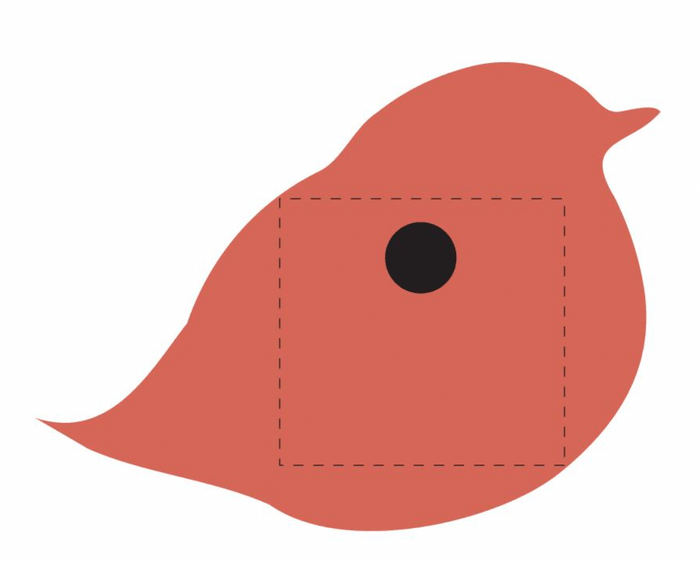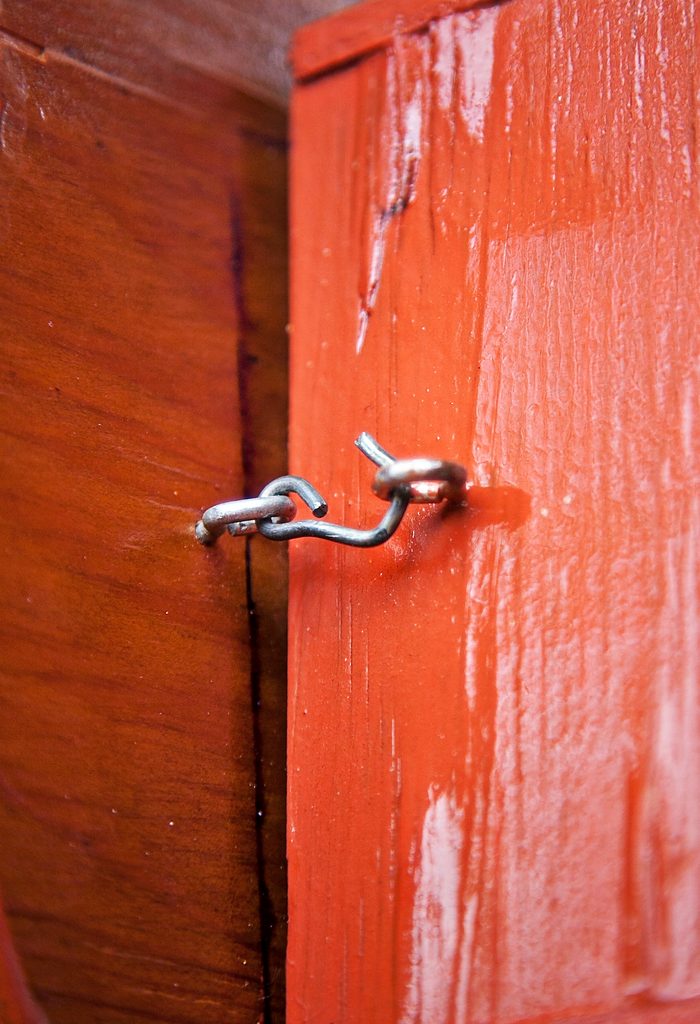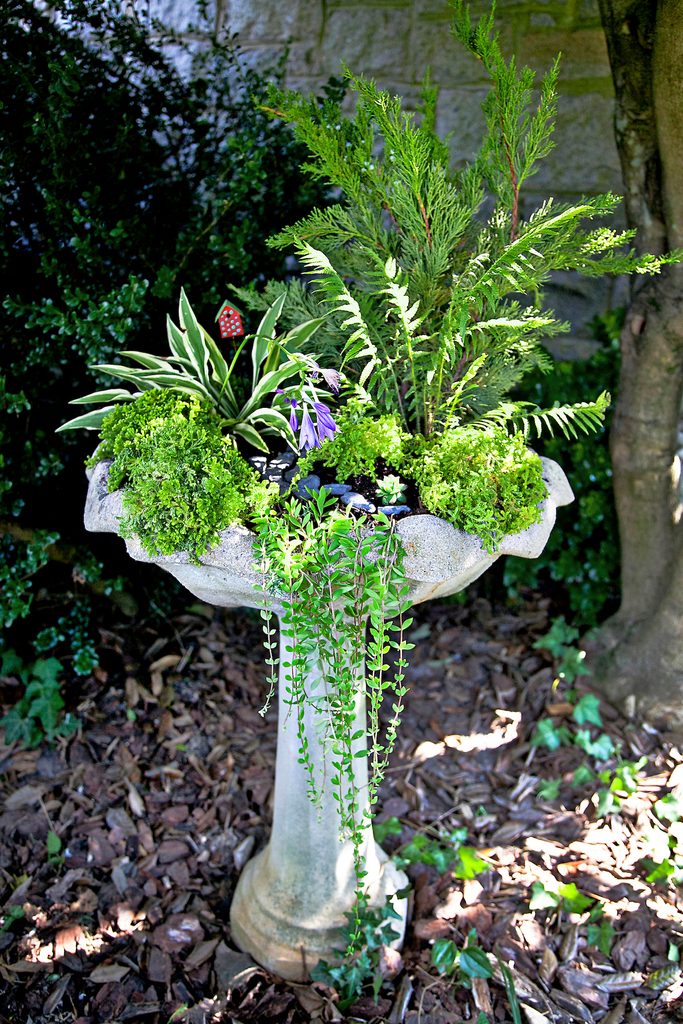
Transform an old birdbath into a planter with this easy idea. If you have a birdbath that’s had its day, give it new life as a planter for a miniature fairy garden. Add a little magic with a stone pathway or a few fairy garden accents. We’ve listed our favorite plants for this project, as well as landscaping tips.
Learn how to repair a cracked birdbath.
Miniature Plants for Your Birdbath Planter:
Succulents
Use succulents for accent plants or “shrubs.”
- Stonecrop sedum
- Limelight sedum
- Blue Spruce sedum
- Silver Onion echeve
Ground Covers
Use ground cover plants to create a mat of green in the miniature garden, and a “waterfall” over the birdbath planter.
- Golden club moss (Selaginella kraussiana ‘Aurea’)
- Scotch moss (Sagina subulata ‘Aurea’)
- Blue Star creeper
- Pink cranesbill (Erodium x variabile)
Conifers
Provide woodland “shade” and a layer of realism with dwarf conifers.
- Jervis dwarf Canadian hemlock
- Dwarf Pagoda Japanese holly
- Mont Bruno boxwood
- Fernspray false cypress
- Lime Glow juniper
Materials for a Birdbath Planter:
- Old birdbath or other container
- Bagged potting mix
- Planting material
- Small stones, gravel or pine bark nuggets
- Fairy garden accessories (optional)
Birdbath Planter Instructions:
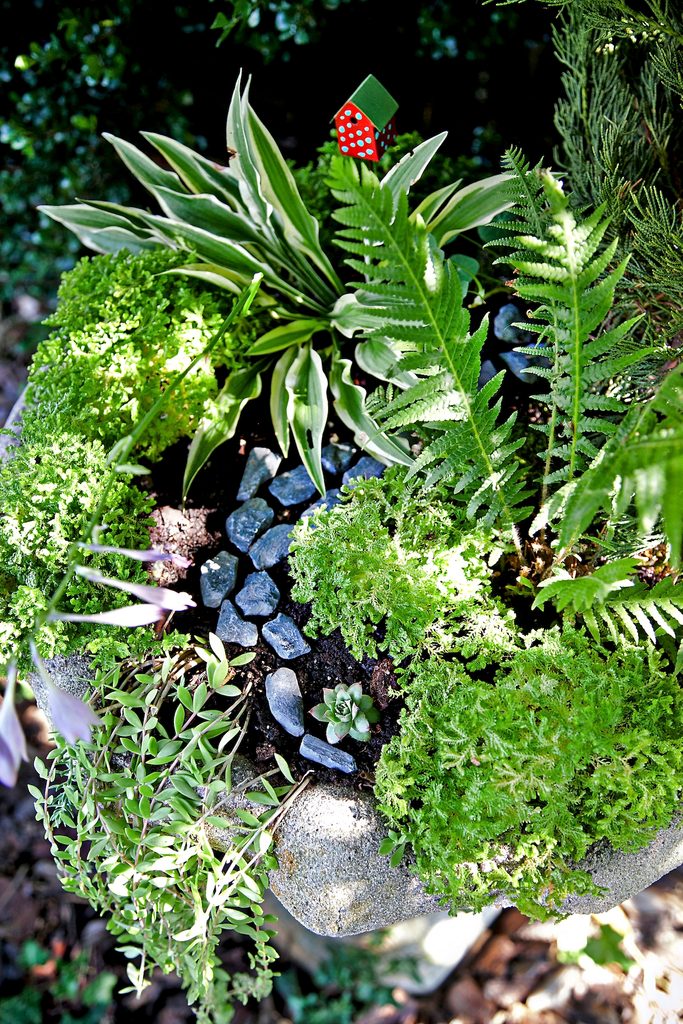
Step 1
Place a birdbath or other container, like a terra-cotta pot or wooden box, where it will stay permanently before planting in it. It will be too heavy to move later. Play around with the landscape design with the plants still in their pots to make things easier on you and the plants.
Step 2
Fill the planter about two-thirds full with soil.
Step 3
Remove plants from their pots one at a time, knock off soil, and loosen and spread out roots. If roots are matted, spray with a hose to detangle them, then gently pull them apart.
Step 4
Position the plants in the soil by spreading the roots of each as widely as you can, while leaving room for neighboring plants. This step is especially important if you are using a birdbath or similarly shallow planter. Once you’re satisfied, add as much soil as possible to cover the roots, but not so much that watering will wash it away.
Step 5
Gently water all plants with a watering can or by holding your thumb over a hose nozzle to make a fine spray.
Step 6
Add decorative features. Try using everyday items in a new way. Gravel can be a tiny stone path; tumbled glass transforms into a shimmering pond. Fairy garden decorations range from minuscule arbors and bridges to tiny houses and animal figurines.
Next learn how to clean a birdbath the right way.
Why Trust Us
For nearly 30 years, Birds & Blooms, a Trusted Media Brand, has been inspiring readers to have a lifelong love of birding, gardening and nature. We are the #1 bird and garden magazine in North America and a trusted online resource for over 15 million outdoor enthusiasts annually. Our library of thousands of informative articles and how-tos has been written by trusted journalists and fact-checked by bird and garden experts for accuracy. In addition to our staff of experienced gardeners and bird-watchers, we hire individuals who have years of education and hands-on experience with birding, bird feeding, gardening, butterflies, bugs and more. Learn more about Birds & Blooms, our field editor program, and our submission guidelines.
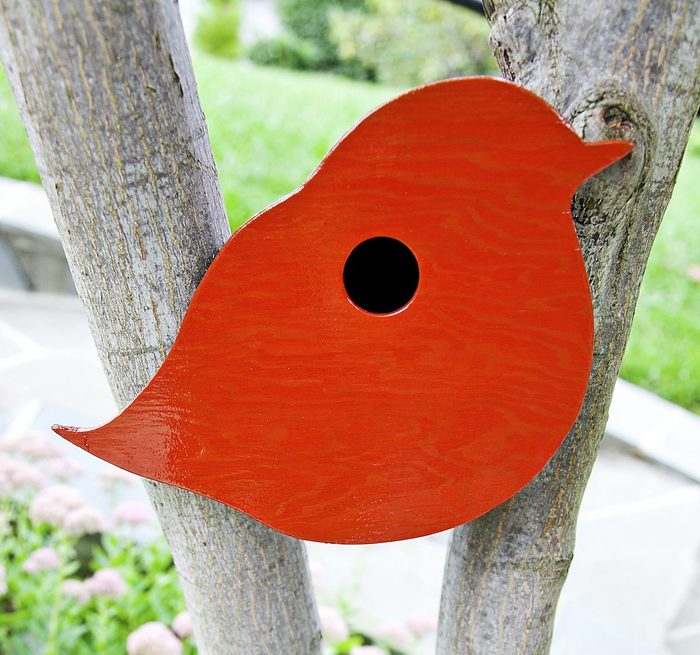
This little bird-shaped birdhouse is simple, sweet and versatile! If you already have a nest box that matches the dimensions needed, then you’ll be able to make this creative birdhouse almost before you can say “black-capped chickadee!”
Don’t forget to check this birdhouse hole size chart.
Bird-Shaped Birdhouse Materials:
- 5-in.-square box (built, reclaimed or purchased)
- Lauan plywood for “bird” shape
- Small finish nails
- Picture-hanging hardware or wire and 2 screws
- 1-in. butt hinge
- Screen door hook and eye
- Glue
- Exterior latex primer and paint
- Shellac or other outdoor varnish
- Bird template
- Jigsaw
- Screw gun or drill
- 1¼-in. to 1½-in. hole saw
- Clamps
- Hammer
- Fine-grit sandpaper
Step-By-Step Instructions:
Editor’s note: If you are building the box, follow the instructions from step 1. If you already have a box, begin with step 6.
Step 1
Cut one 5×5-in. square, two 5×4¾-in. rectangles and two 4¾x4½-in. rectangles out of ¼-in. plywood, clear pine, shelf board, barn board or similar.
Step 2
Step 3
Step 4
Step 5
Step 7
Step 8
Step 9
Paint and Assemble
Step 10
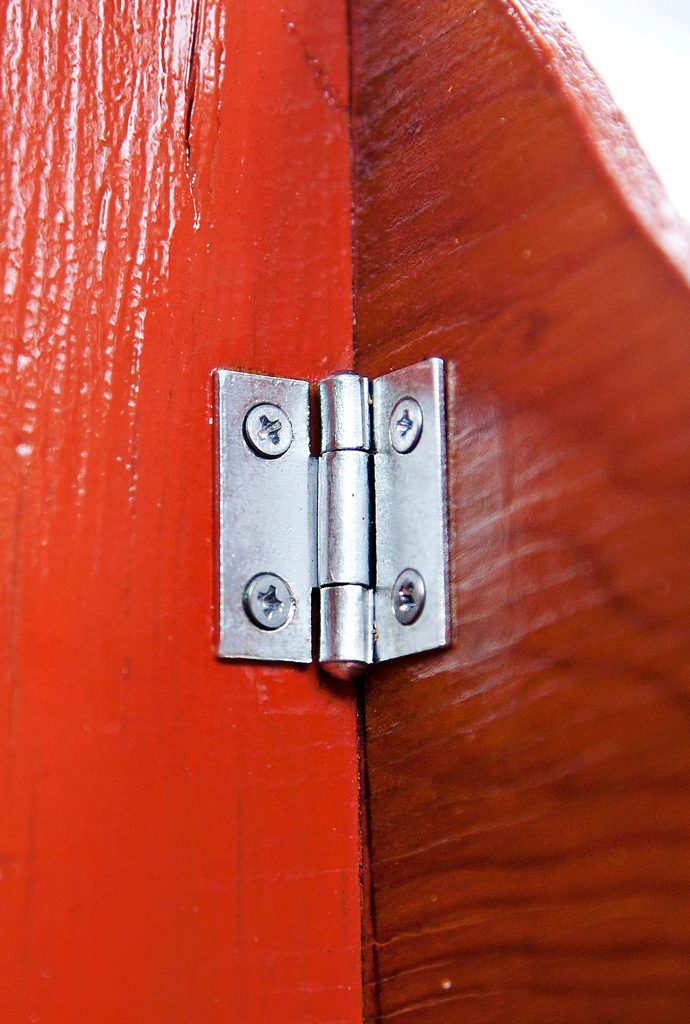
Step 11
Step 12
Step 13
Seal the outside of birdhouse with several coats of shellac.
Step 14
Attach picture-hanging hardware to the back of the box and display in your backyard!
Next, learn how to make a simple one-board DIY birdhouse and a DIY bluebird house.
Why Trust Us
For nearly 30 years, Birds & Blooms, a Trusted Media Brand, has been inspiring readers to have a lifelong love of birding, gardening and nature. We are the #1 bird and garden magazine in North America and a trusted online resource for over 15 million outdoor enthusiasts annually. Our library of thousands of informative articles and how-tos has been written by trusted journalists and fact-checked by bird and garden experts for accuracy. In addition to our staff of experienced gardeners and bird-watchers, we hire individuals who have years of education and hands-on experience with birding, bird feeding, gardening, butterflies, bugs and more. Learn more about Birds & Blooms, our field editor program, and our submission guidelines.
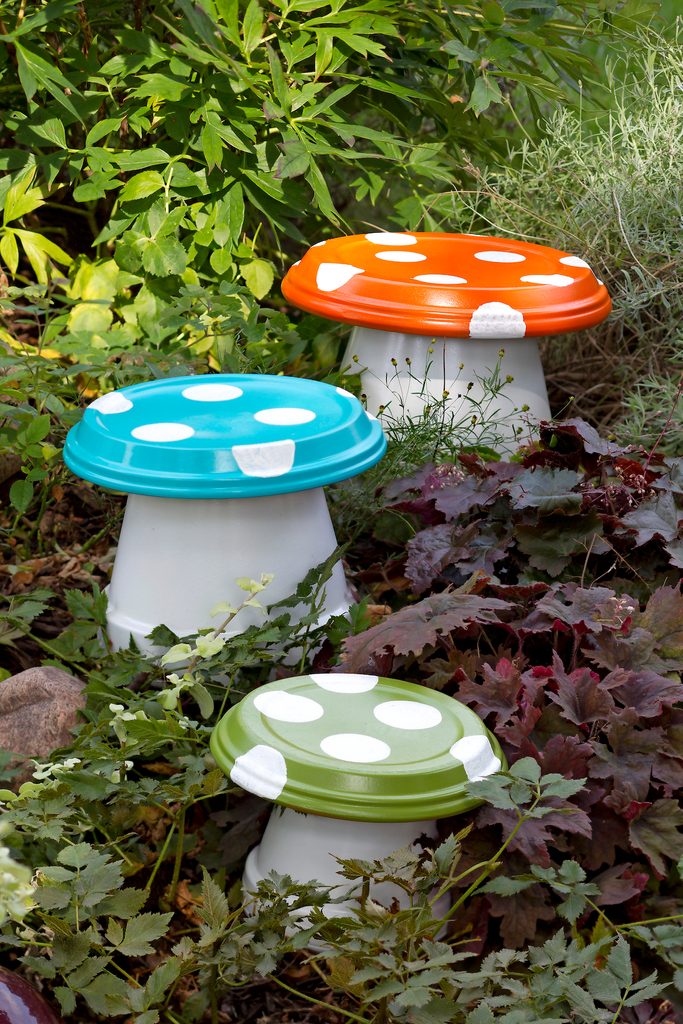
Dress up your garden or porch with these DIY garden mushrooms. They’re quick and easy to make, and lightweight so you can move them to different parts of your yard. Use any old pots you have on hand or, for a faster project, buy pre-painted pots and add the painted dots. This project is great for kids, too!
Learn how to make a bowling ball garden art ladybug.
DIY Garden Mushrooms Materials:
- 2 to 3 round terra cotta pots in various sizes
- 2 to 3 round terra cotta drain plates (each 3 to 5 inches wider than the bottom of matching pot)
- Spray paint, in white, and in choice of colors for mushroom tops
- White acrylic craft paint
- Waterproof clear paint- on or spray sealer
- 2-inch-wide round sponge or spouncer
- Small paintbrush
- Epoxy or waterproof outdoor glue (optional)
Step-By-Step Instructions:
Step 1
Step 2
Step 3
Step 4
Step 5
Step 6
Find a good spot to display your DIY garden mushrooms. They’re lightweight and they can be moved to add color to different parts of your yard.
Backyard Tip: Want even taller mushrooms? Paint more pots in various sizes and stack them. Place a drain plate on top of each stack.
If you like to give old items new life, you’ll love to learn how to make a DIY garden license plate dragonfly.
Why Trust Us
For nearly 30 years, Birds & Blooms, a Trusted Media Brand, has been inspiring readers to have a lifelong love of birding, gardening and nature. We are the #1 bird and garden magazine in North America and a trusted online resource for over 15 million outdoor enthusiasts annually. Our library of thousands of informative articles and how-tos has been written by trusted journalists and fact-checked by bird and garden experts for accuracy. In addition to our staff of experienced gardeners and bird-watchers, we hire individuals who have years of education and hands-on experience with birding, bird feeding, gardening, butterflies, bugs and more. Learn more about Birds & Blooms, our field editor program, and our submission guidelines.
On This Page
How to Grow Balloon Flower
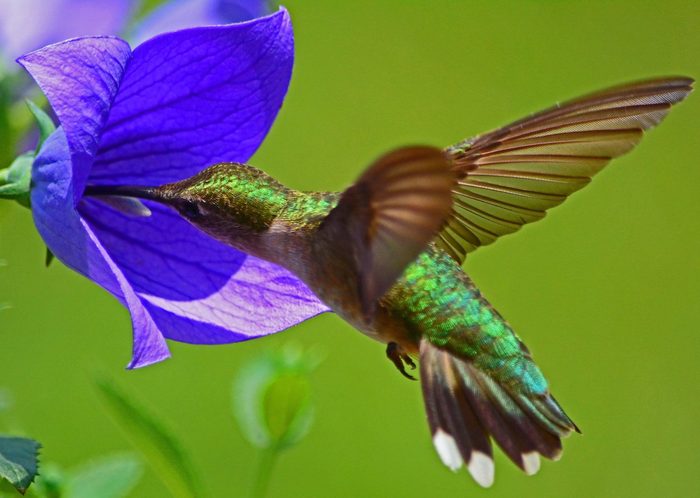
- Common name: Balloon flower, Chinese bellflower, Japanese bellflower
- Scientific name: Platycodon grandiflorus
- Hardiness zones: 3 to 8
- Light needs: Full sun to part shade
- Watering needs: Consistently moist, not wet
- Preferred soil: Well-draining, moist soil
- Size: 1 to 2 feet tall, 1 to 1 1/2 feet wide
- Pollinators: Bees and butterflies
Although the Latin botanical names are the best way to talk about flowers, since common names vary so widely, some common names are still a lot of fun and definitely worth knowing. Balloon flower (Platycodon grandiflorus) is a great example. Once you see one of these plants covered in balloon-shaped buds and getting ready to burst into bloom, you’ll know exactly where the common name came from. These plants are a great choice for your cottage garden.
Are Balloon Flowers Perennials?
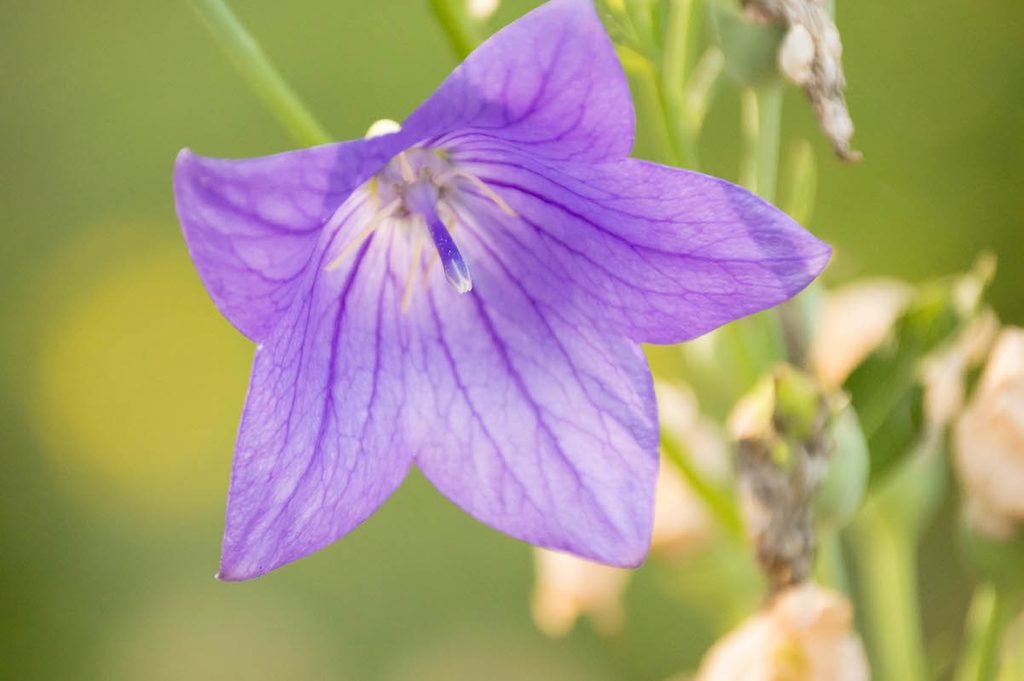
These clump-forming perennials are members of the low-maintenance bellflower family of plants. Growing balloon flower is really quite easy; it will thrive in almost any garden and is hardy down to zone 3.
Where to Plant Balloon Flower
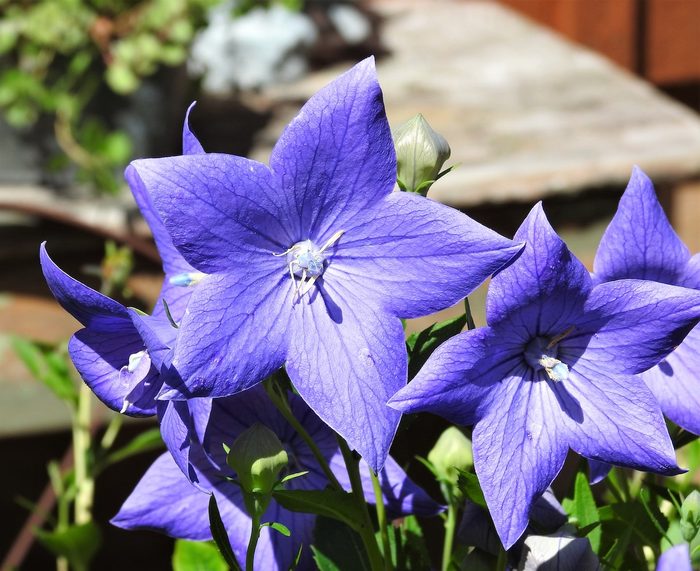
For the most blooms, plant balloon flower in locations with part to full sun with proper drainage says Jen McGuinness, author of Bird-Friendly Gardening: Guidance and Projects for Supporting Birds in Your Landscape. “I grow pink balloon flower in my front garden in soil that drains quickly after it rains. It is interplanted with bearded irises and daylilies in a part sun location.”
A bit of afternoon shade can help the plant withstand the hottest summer weather.
In colder zones, the plant dies back to the ground in the winter. It’s often one of the later perennials to emerge in the spring, so you probably will want to mark the spot somehow so you don’t plant over it or accidentally weed it out. And choose that spot wisely—balloon flower doesn’t like to be transplanted or divided due to its fragile fleshy root system.
“The plant is slow to emerge in the spring, so be sure not to accidentally remove it when the garden season kicks off. It does best in a spot where it won’t be moved. I’ve had mine for several years!” Jen says.
For more blue beauty, grow delphinium in your flower garden.
When to Plant Balloon Flower
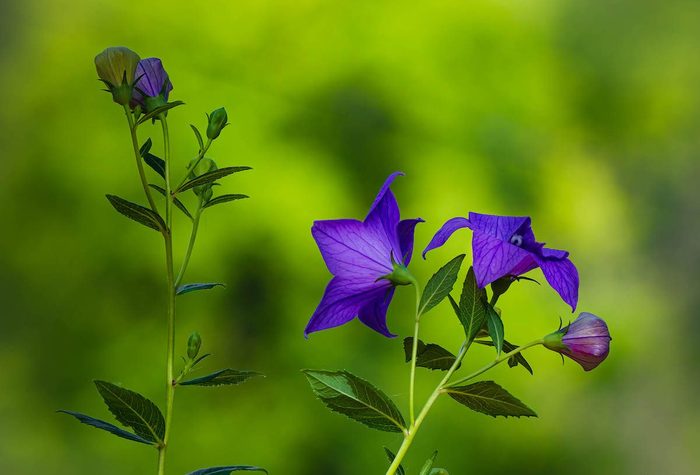
If you want to start with a packet of seeds, remember that you might not get blooms the first year. Some varieties and those started early enough indoors may flower the same year. It’s easier if you start with plants from your local garden center. Add them to your flower beds in spring after the threat of frost has passed.
They should begin blooming in mid- to late summer, and will continue producing flowers with regular deadheading. That’s basically all the care they’ll need, though. Deadheading will also prevent the plants from self-seeding and spreading.
If you want to save the seeds, wait until the pods turn brown and dry completely, then pop them open into a paper bag. Direct sow the seeds into your garden the following spring.
Watering Needs
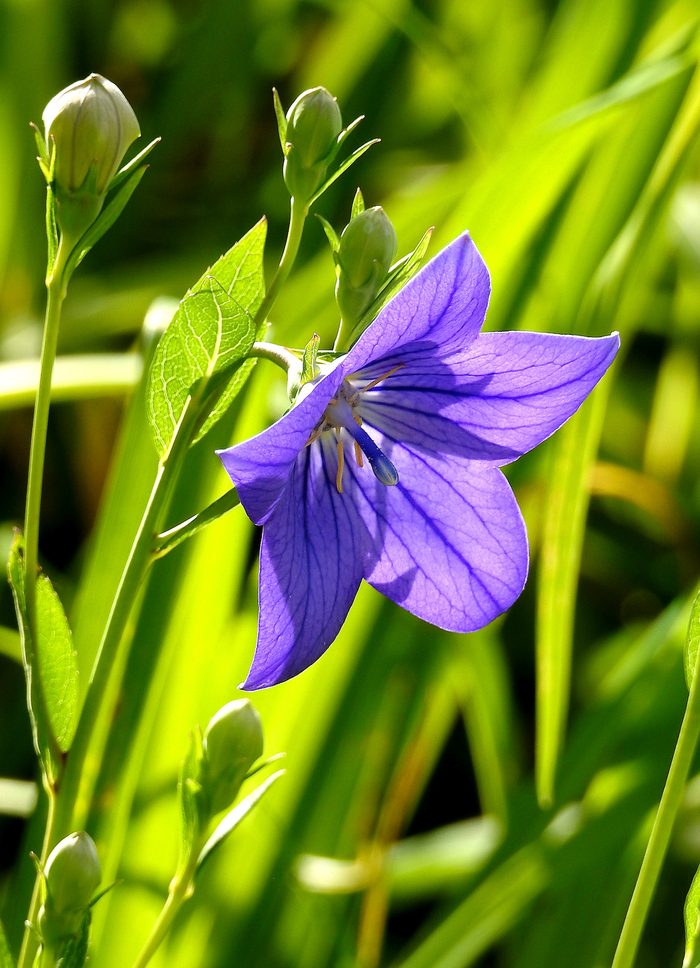
New plants need regular watering while getting established in the garden, but then they are fairly drought tolerant and disease resistant.
Can You Grow Balloon Flower in Containers?
The plants grow well in large containers as long as the pot is deep enough to accommodate the plant’s long fleshy roots; 10 to 12 inches is usually deep enough. Make sure the container you choose has a drainage hole so the potting mix doesn’t get soggy.
Best Varieties to Grow
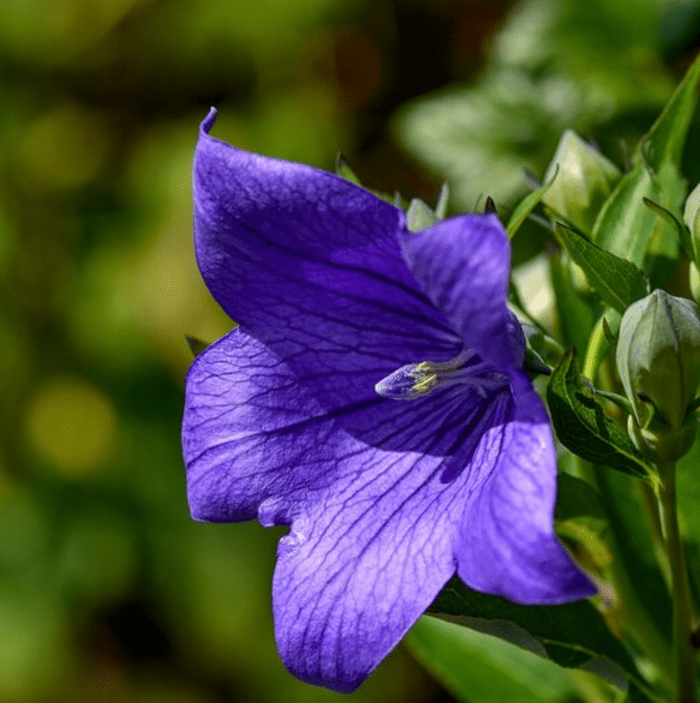
The most common blooms are in shades of blue, but pink and white flowering varieties are available, too. Recommended blue-violet blooming varieties include ‘Astra Blue,’, ‘Fuji Blue,’ and ‘Sentimental Blue.’
In most conditions, balloon flower will grow up to 2 feet tall; look for dwarf varieties for smaller gardens and containers.
“The pink balloon flower is shorter in size than some of the blue varieties, so it does well along the garden path as an edging plant. It starts to bloom in early summer,” says Jen.
Wildlife Benefits
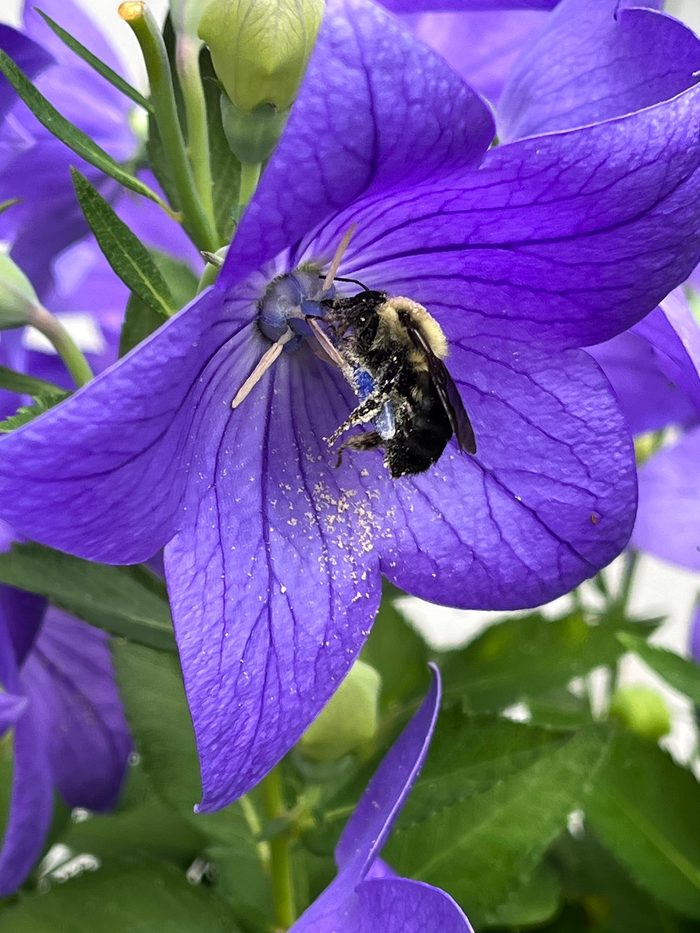
The colorful flowers attract bees and butterflies and other pollinators, including hummingbirds, but deer typically leave these plants alone.
“Balloon flower is a perennial favorite of mine. Bees love it, and it deadheads easily. Plus, it will bloom nearly all summer and into a warm fall,” says Birds & Blooms reader Susan Steele of Livonia, Michigan.
About the Expert
Jen McGuiness is the author of the recently released gardening book, “Bird Friendly Gardening: Guidance and Projects for Supporting Birds in Your Landscape,” published by Cool Springs Press/Quarto Knows.
Sources
- White Flower Farm – Balloon flower
- Drought-Tolerant Plants for the Conscientious Gardener – Research Guides at New York Botanical Garden
- Proven Winners
- Monrovia
- Walters Gardens
- University of Illinois-Extension – Balloon flower
Why Trust Us
For nearly 30 years, Birds & Blooms, a Trusted Media Brand, has been inspiring readers to have a lifelong love of birding, gardening and nature. We are the #1 bird and garden magazine in North America and a trusted online resource for over 15 million outdoor enthusiasts annually. Our library of thousands of informative articles and how-tos has been written by trusted journalists and fact-checked by bird and garden experts for accuracy. In addition to our staff of experienced gardeners and bird-watchers, we hire individuals who have years of education and hands-on experience with birding, bird feeding, gardening, butterflies, bugs and more. Learn more about Birds & Blooms, our field editor program, and our submission guidelines.
On This Page
How to Grow Lungwort Flowers
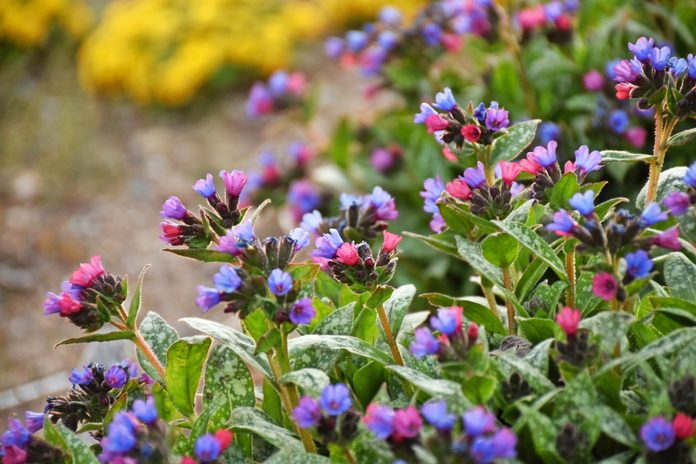
- Common name: Lungwort, spotted dog, Bethlehem sage
- Scientific name: Pulmonaria spp.
- Hardiness zones: 3 to 8
- Light needs: partial shade, shade
- Watering needs: moderate
- Preferred soil: consistently moist, well-draining, nutrient rich
- Size: clumps 6 to 12 inches tall and 12 to 24 inches high
- Attracts: hummingbirds, bees, butterflies
An energetic plant with a tragically unpleasant name, lungworts and their delicate multicolored flowers are coveted by gardeners for their ability to thrive in shady spaces.
“Colorful choices for a shade garden can be limiting, so any splash of color is a welcome addition,” says Spencer Campbell, Arboretum Plant Clinic Manager at The Morton Arboretum. “They can also be planted as ground cover to fill in areas of the garden where other plants may have a hard time getting established.”
Lungwort is one of the best shade garden plants for your shady areas.
Lungwort Foliage and Flowers
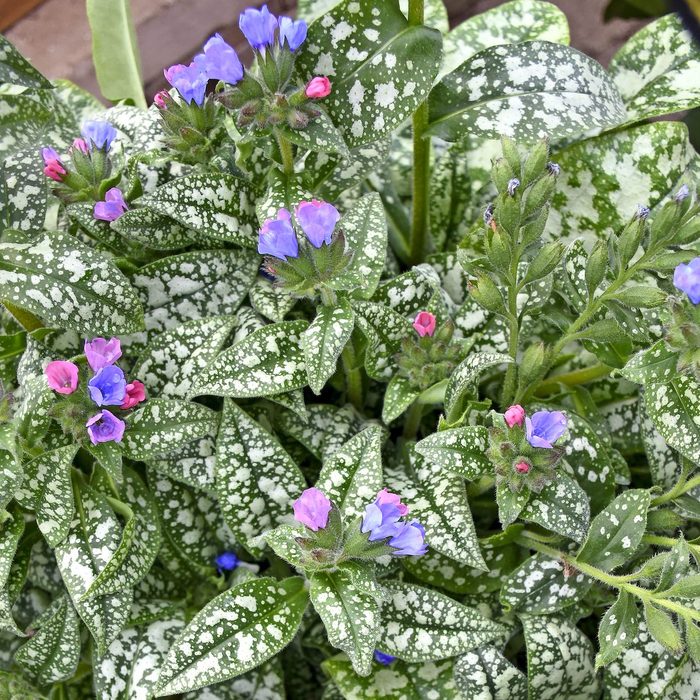
While pollinators love their flowers — which bloom early in the season and vary from blue and pink to purple, red and white — gardeners often choose them for their bushy, decorative leaves.
“Lungwort’s foliage is often adorned with white or silver spots once thought to resemble human lungs,” says Laura Root, a horticulturist at Park Seed. “This led to their historical use in treating respiratory ailments and earned it the name Pulmonaria.”
Grow hese fabulous foliage plants for garden pizzazz
Where to Plant Lungwort
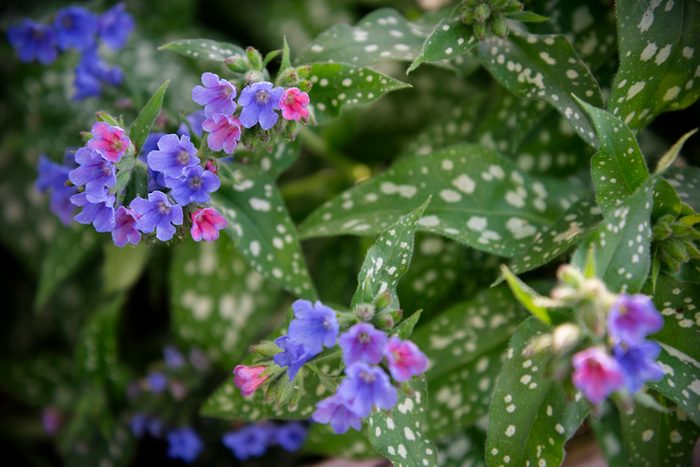
When planted in the right conditions, Pulmonaria are a low-maintenance perennial — but finding that perfect happy place can be a bit of a task.
Their forever home should be in a shady area or one with dappled sunlight. They’re also particular about having moist, well-draining (but not soggy) soil. They love being under the shade of a tree canopy, but sometimes trees outcompete them for moisture, so in that case they may need supplemental water.
“Also, be mindful if you are planning to plant them around trees so you do not disturb their established surface roots,” says Spencer.
Psst—we found the perfect ground cover plants for every landscape.
How and When to Plant Lungwort
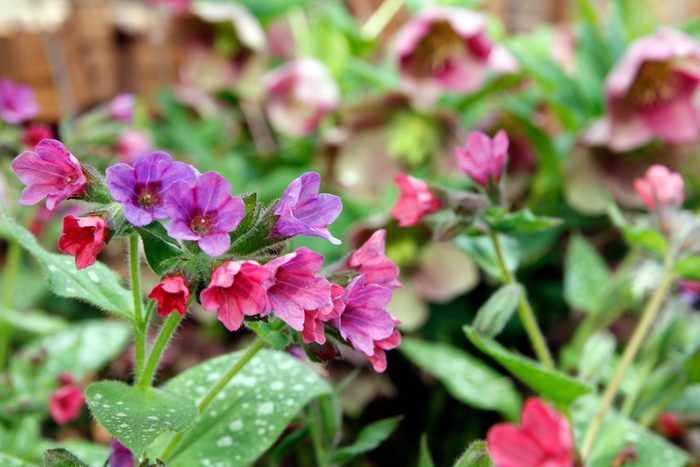
Most people plant Pulmonaria from potted plants or plugs, as they’re both difficult and slow to germinate by seed. While that raises the upfront costs a bit, they make up for it with value down the road.
“They are a great plant for division, making it valuable to the money saving gardener,” says Laura. “The best time to divide is after flowering. But they are slow spreaders so it is not advised to do this every year.”
Once you find your perfect Pulmonaria location, plant them in the spring, after the last frost. Early autumn is also a good time, as it allows the roots to get established before winter. Make sure to also fertilize them lightly with compost each spring.
Learn how to grow and care for hostas.
Lungwort Wildlife Benefits
While Pulmonaria is not native to North America, it is often considered a good addition to pollinator gardens anyway. As an early bloomer, it provides an important spring food source for bumblebees, plus its clump-forming growth creates habitat for beneficial insects like beetles and spiders, says Laura. It’s also rare to find a shade plant that’s good for attracting hummingbirds and butterflies.
Brunnera Jack Frost is another good choice for a shady spot.
Lungwort Cultivars to Grow
Pulmonaria comes in a wide variety of cultivars and hybrids. An especially noteworthy variety is Raspberry Splash, which is highly resistant to slugs and mildew infections, plus known for its vivid, large pink-and-purple bloom clusters.
Lungwort Pitfalls, Pests and Problems
One of the biggest complaints about Pulmonaria is that it wilts and dies back in hot weather. But, they usually perk up once the weather cools. To help them bounce back, trim off dead sections and keep them watered, but not soggy. Once they are done flowering, it’s also helpful to prune off the stems and tattered leaves to encourage new growth.
Other common problems and concerns include:
- Planting areas that are too wet, or soil that remains soggy for a prolonged period, both of which can cause leaf spots and crown and root rot.
- Planting areas that are too dry, which can cause dormancy.
- Soils that are too alkaline or too acidic. Lungwort does best within the 7.0 to 8.0 pH range.
- Slugs, which can damage foliage.
- Powdery mildew, which can affect aesthetics.
- Toxicity to humans and pets, which occurs in some, but not all, species of Pulmonaria.
Next, learn how to grow foolproof ferns in your shade garden.
About the Experts
Laura Root is a horticulturist at Park Seed. She earned her degree in environmental horticulture from Virginia Tech and loves helping gardeners of all experience levels create vibrant, sustainable landscapes.
Spencer Campbell is the Arboretum Plant Clinic Manager at The Morton Arboretum in Lisle, Illinois. The Plant Clinic is a free nationwide service providing home gardeners and green professionals with plant and growing advice.
Why Trust Us
For nearly 30 years, Birds & Blooms, a Trusted Media Brand, has been inspiring readers to have a lifelong love of birding, gardening and nature. We are the #1 bird and garden magazine in North America and a trusted online resource for over 15 million outdoor enthusiasts annually. Our library of thousands of informative articles and how-tos has been written by trusted journalists and fact-checked by bird and garden experts for accuracy. In addition to our staff of experienced gardeners and bird-watchers, we hire individuals who have years of education and hands-on experience with birding, bird feeding, gardening, butterflies, bugs and more. Learn more about Birds & Blooms, our field editor program, and our submission guidelines.
On This Page
Are Ruby-crowned and Golden-crowned Kinglets Related?
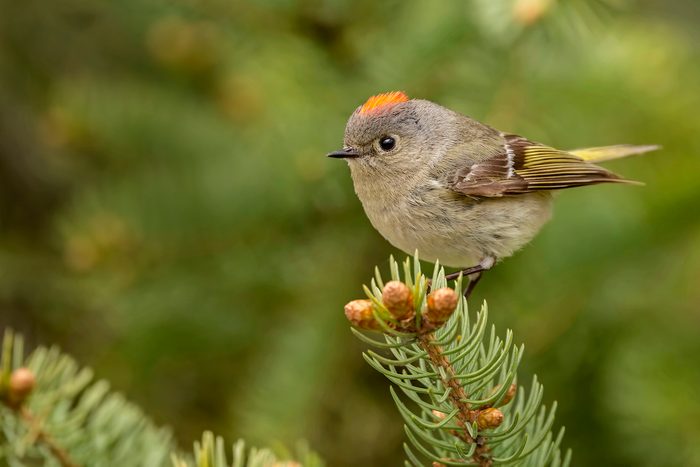
Summer residents of boreal and temperate montane forests, the ruby-crowned kinglet and golden-crowned kinglet share many similarities in behavior and appearance.
“They’re both really tiny,” explains ornithologist Ed Pandolfino, PhD. And both birds have small, sharp black bills. However, due to a taxonomic revision, the two are not as closely related as they once were thought to be.
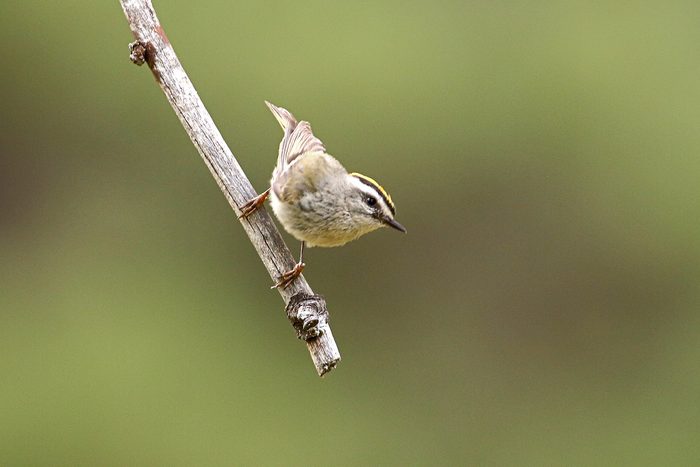
“The ruby-crowned is in its own genus,” explains Ed, noting it was classified with the other kinglets in Regulus for many years before being restored as the only member of the genus Corthylio. While the kinglets are still distantly connected, it’s also interesting to note that the golden-crowned kinglet is more closely related to the Goldcrest, an Old World species.
Despite this new designation, it helps to understand their physical characteristics and habits to appreciate these vivacious little insect-eaters.
Meet 20 stunning warblers to look for in spring.
What Does a Golden-crowned Kinglet Look Like?
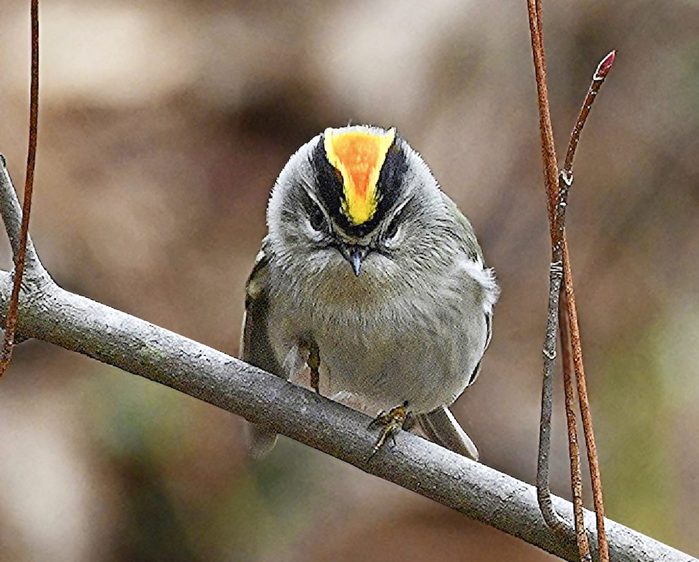
Ed notes that the male and female have the emblematic golden crown, but the male’s crown has fiery orange in the middle of the gold. Both are olive green on top and gray on the bottom with a white wing stripe. Measuring shy of 4-inches long and weighing a mere 0.1 to 0.3 ounces, they’re often difficult to spot when they’re high in the treetops.
Learn how to identify a blue-gray gnatcatcher.
Golden-crowned Kinglet Range and Habitat
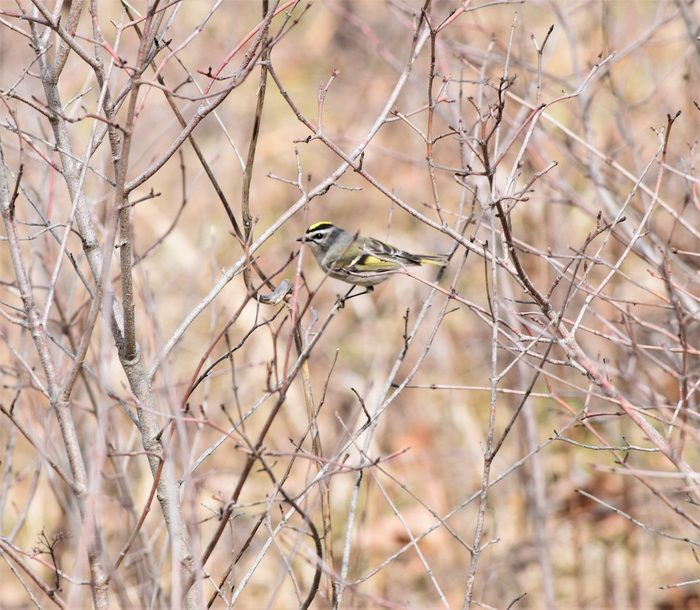
Golden-crowned kinglets prefer conifer forests, especially old growth areas, as well as along the northeastern mountains of the U.S. Ed says even though they are very tiny, they are surprisingly cold tolerant. “They will often winter where they breed,” he says, noting that while many migrate to lower elevations or more southerly locations, there are populations that over-winter as far north as Maine, where temperatures plunge to -40F.
There is speculation on how they survive these extreme conditions, although they’ve been observed seeking shelter in a tree cavity and huddling together.
Nesting Habits of Golden-crowned Kinglets
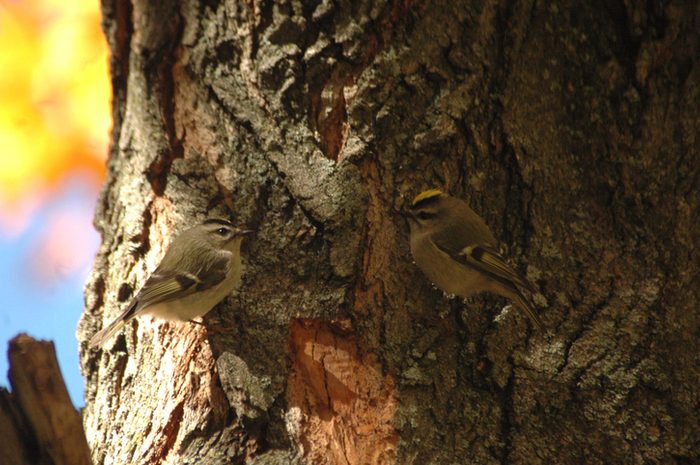
As monogamous pairs, the male stakes out their territory by flaring his crown, singing, and giving rapid “tseee” vocalizations. The nest is situated up to 60-feet high in a conifer treetop, typically close to the trunk. Both parents aid in the construction of the 3-inch high and 3-inch wide nest formed of mosses, lichens and soft materials, and raise two broods of three to 11 whitish eggs with light brown and lavender speckles.
During incubation and nesting the female remains on the nest while the male provides food for her and the brood, which fledge between 17 and 19 days.
Meet 25 small yellow birds you might see.
What Do Golden-crowned Kinglets Eat?
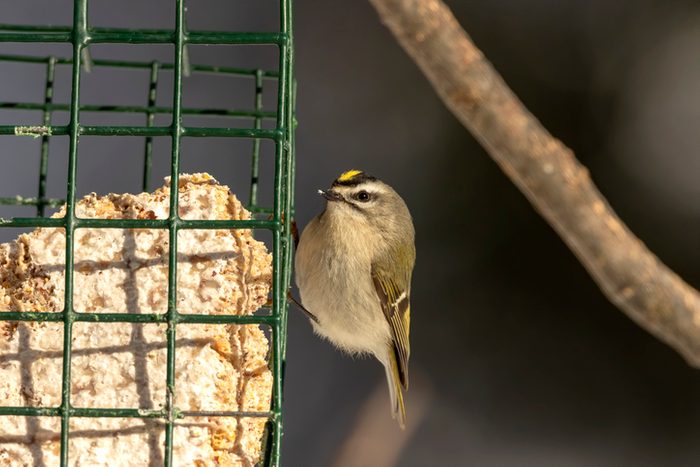
“They’re tiny birds with tiny bills, so they’re not really going to focus on seeds,” says Ed. “If you want to attract them to your garden, they are insectivores.” Growing native plants and not using pesticides helps create a conducive habitat. He also recommends a suet feeder or placing mealworms on a tray for a treat.
Insect-eating birds: do birds eat bees, mosquitoes and butterflies?
Golden-crowned Kinglet Songs and Calls
Bird songs courtesy of the Cornell Lab of Ornithology
With a series high-pitched notes within their vocal repertoire, the song golden-crowned kinglets is sometimes one of the first birds missed as people lose their hearing. There are approximately 14 different calls and songs ranging from a series of “tsee-tsee-tsees” to high, thread-like notes.
What Does a Ruby-crowned Kinglet Look Like?
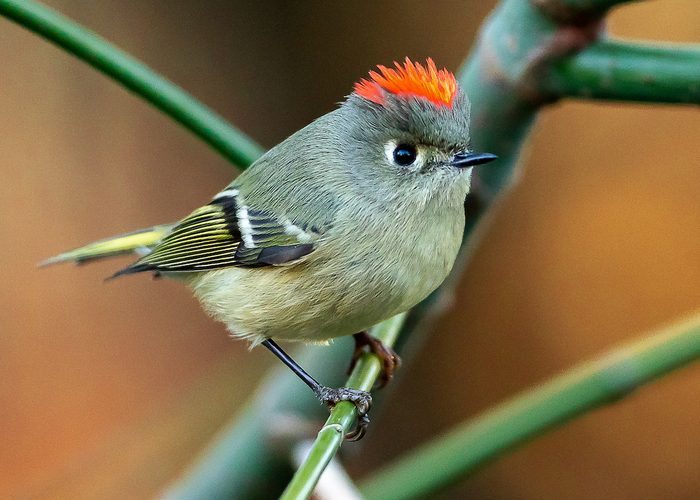
The male and female are both olive-green with white eye rings and white wing bars, but only the males sport the distinctive red crown. “They are feisty little birds,” says Ed, who notes that when they’re agitated, the males flare their bright ruby crest.
The red crown is hidden most of the time—those red crown feathers are usually concealed among the other head feathers, and they only become prominent when the bird is excited or alarmed.
These kinglets are easily spotted because of their frenetic behavior, including constantly flicking their wings.
Meet more small red bird species you should know.
Ruby-crowned Kinglet Range and Habitat
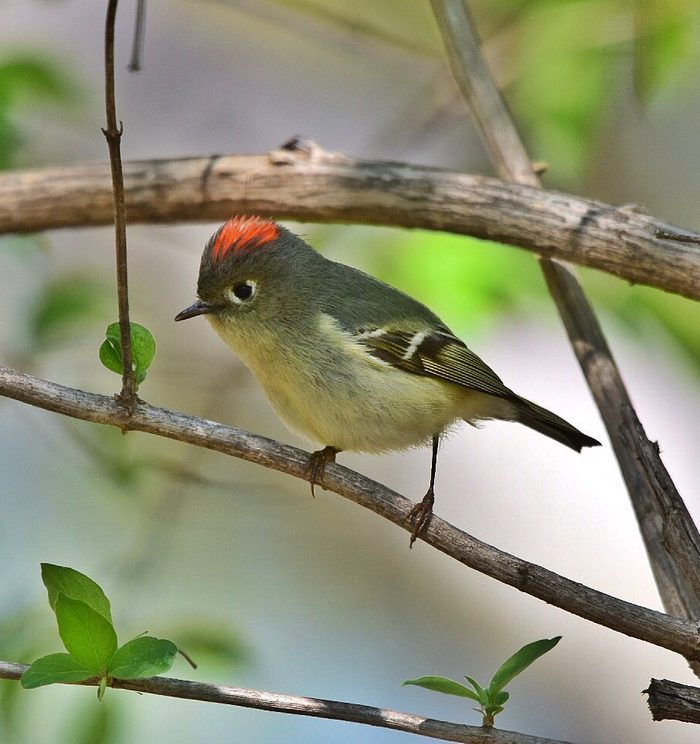
During the summer breeding months, the ruby-crowned kinglets occupy boreal forests from Alaska to the Atlantic coast and the forests of the Western mountains. The ruby-crowned tends to prefer more open forests than the golden-crowned, though both species prefer to be near water.
In the winter, ruby-crowned kinglets vacate the higher elevations and northern latitudes. Ed says, “They migrate to lower elevations of the Western and Southern half of the U.S. and into Mexico.
Nesting Habits of Ruby-crowned Kinglets
When it comes to building the nest, the female chooses the site, which is often high up in the tree, and constructs the dual-layered structure using moss, twigs, spiderwebs, feathers and plant materials. The end result is a globe-shaped nest measuring 4-inches across and up to 6-inches long.
Instead of fighting, they use their loud vocalizations to ward off unwanted intruders into their territory, and the pair remains together for two months, long enough to send the young from the nest.
Learn how to identify and attract a bushtit bird.
What Do Ruby-crowned Kinglets Eat?
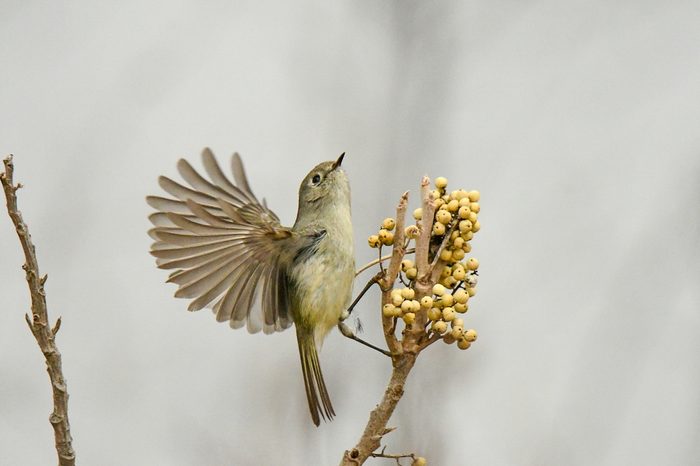
Ruby-crowned kinglets will hover and pluck aphids, ants and other insects off of leaves and branches. When insects aren’t as abundant, they’ll sometimes feed upon seeds and fruit, such as poison oak berries.
In the backyard, they also visit suet feeders. “If you’re going to put up suet, look for ones of the cages that have small openings,” says Ed, recommending this as a good way to discourage jays.
Nuthatch vs chickadee: here’s how to tell the difference.
Ruby-crowned Kinglet Songs and Calls
Bird songs courtesy of the Cornell Lab of Ornithology
“They tend to be very vocal,” says Ed. Their calls lean towards more of a harsh, two-part chatter, and their musical songs start off with soft, high-pitched notes, then increase in volume and complexity. Though each individual male sings only one song, those songs vary from place to place throughout their range.
Next, meet 6 types of wrens you should know.
About the Expert
Devoted to birds for over 30 years, Ed Pandolfino‘s accomplishments include publishing dozens of peer-reviewed scientific articles, two books, and serving as president of Western Field Ornithologists, vice-president of San Francisco Bay Bird Observatory, along with a myriad of other bird-related organizations.
Sources
- Cornell Lab of Ornithology – Ruby-Crowned Kinglet
- National Audubon Society – Golden Crowned Kinglet
- Sacramento Audubon Society
- Missouri Department of Conservation
Why Trust Us
For nearly 30 years, Birds & Blooms, a Trusted Media Brand, has been inspiring readers to have a lifelong love of birding, gardening and nature. We are the #1 bird and garden magazine in North America and a trusted online resource for over 15 million outdoor enthusiasts annually. Our library of thousands of informative articles and how-tos has been written by trusted journalists and fact-checked by bird and garden experts for accuracy. In addition to our staff of experienced gardeners and bird-watchers, we hire individuals who have years of education and hands-on experience with birding, bird feeding, gardening, butterflies, bugs and more. Learn more about Birds & Blooms, our field editor program, and our submission guidelines.
On This Page
Common Foxglove Plant Care Tips
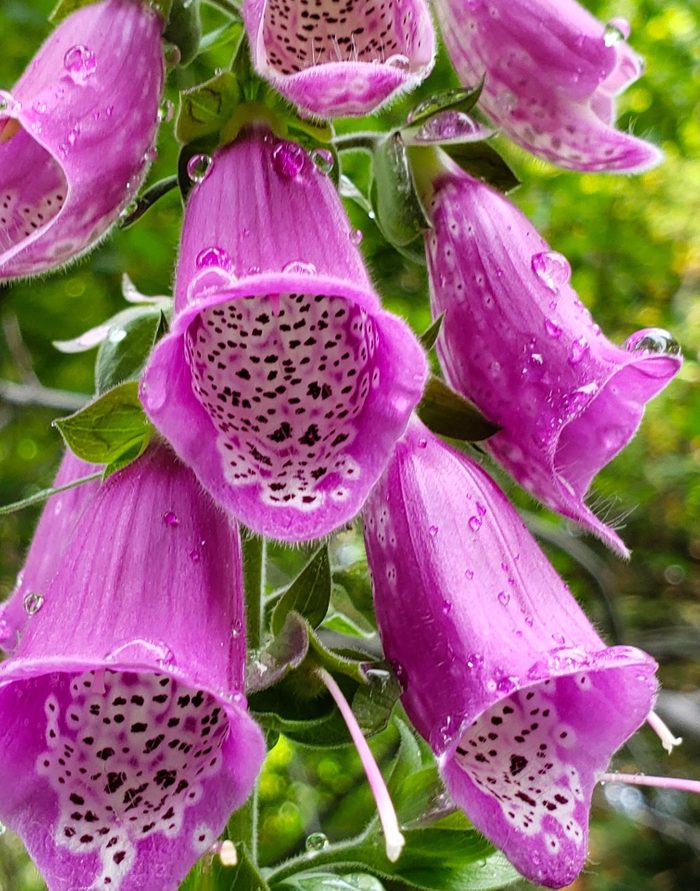
- Common name: Common foxglove
- Scientific name: Digitalis purpurea
- Hardiness zones: Zones 4 to 9
- Light needs: Full sun to part shade
- Water needs: Does best with regular watering and moist well-draining soil
- Size: 1 to 3 feet high
- Attracts: hummingbirds, bees and butterflies
If you’ve ever seen this plant’s otherwordly stalks of tubular purple flowers, you can probably get a sense of why it’s earned a few fairy-tale nicknames, from fairy fingers and ladies’ thimble to fairy bells. Its scientific name, Digitalis purpurea, literally means ‘purple fingers.’
Are Foxglove Plants Invasive?
Common foxglove isn’t native to the U.S. and was brought here from western European countries where it’s still a popular choice in gardens across the United Kingdom. Depending on where you live, it could be a lovely addition to your own garden, as well.
Allen Pyle, a horticulture expert and outreach specialist at the University of Wisconsin-Madison’s Division of Extension, says, “Its large flowers are very showy, make interesting cut flowers, and are attractive to hummingbirds and bumble bees.”
Before you decide to introduce it to your garden, do a little homework first and make sure it won’t wreak havoc on native plants. Allen says, “Digitalis is considered invasive in some mild climate areas including California and Oregon due to potential for reseeding. I haven’t found it an overly aggressive reseeder in the Midwest, however, and cutting flowering stems off after flowers fade and before seed is produced will prevent reseeding.”
If it is not invasive in your area you may decide to allow it to reseed to keep foxglove plants returning to your garden each year.
Discover surprising flowers you never knew are invasive.
When and How to Plant Foxglove
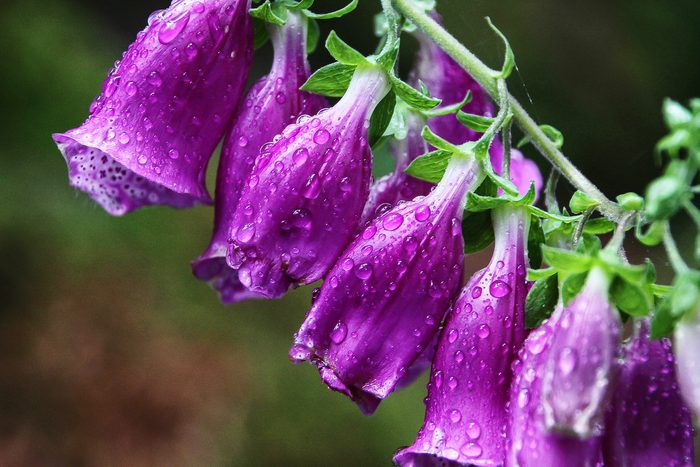
You’ll find some foxgloves that are perennials and bloom every year of their lifespans, but for the most part, this plant is a biennial and blooms once over two years. That means if you start from seed, it will establish its root system and produce leaves in its first spring, then bloom in its second. Its second year is also when it will attempt to reseed for future seasons.
Allen’s advice for continuous blooms? “Planting Digitalis yearly for several years will ensure that some plants are blooming each year,” he says.
It’s easy to start directly from seed instead of buying an already established plant. To start from seed, you can sow them indoors or directly into the ground. “I typically prefer to start Digitalis indoors in a soilless seed-starting medium,” Allen says. “I sow the seeds about nine to 12 weeks before the last expected spring frost.”
Whichever approach you take, it’s important to remember that light is required for the seeds to germinate, so you don’t want to cover the seeds up with soil. Also be sure to keep soil moist.
Check out the top 10 bushes with pretty purple flowers.
Where to Plant Foxglove
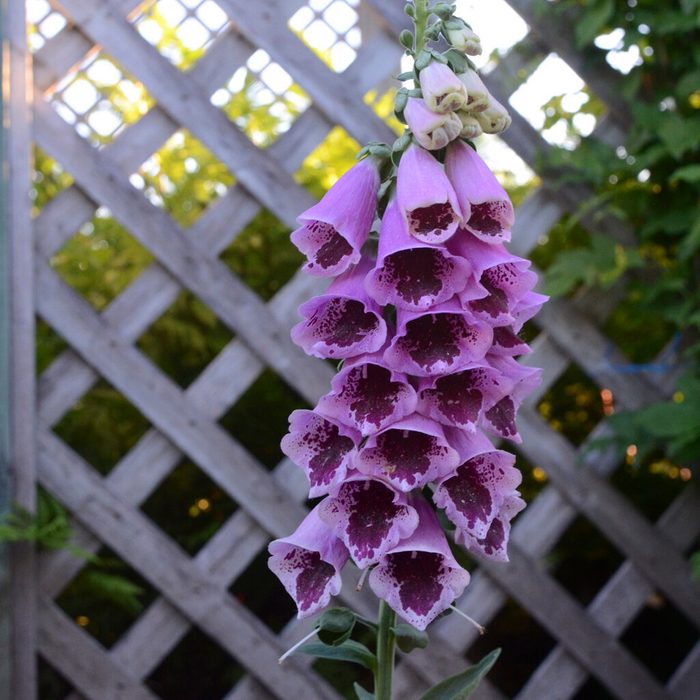
What makes this plant so captivating is not just its vibrant color but also how tall it can grow. Take full advantage of its height and use it in the backs of mixed borders to add visual structure.
You can also plant it in containers — it makes a great thriller centerpiece. Most varieties will grow well in containers, but there are some dwarf varieties available that make it even easier like Dalmatian Peach. Although he says he personally prefers growing this plant in garden beds, for containers, Allen suggests choosing varieties that will flower in their first year, such as the Camelot series or Foxy foxglove. That way, you’ll get major visual impact sooner in its growth cycle.
Native Plant Alternatives
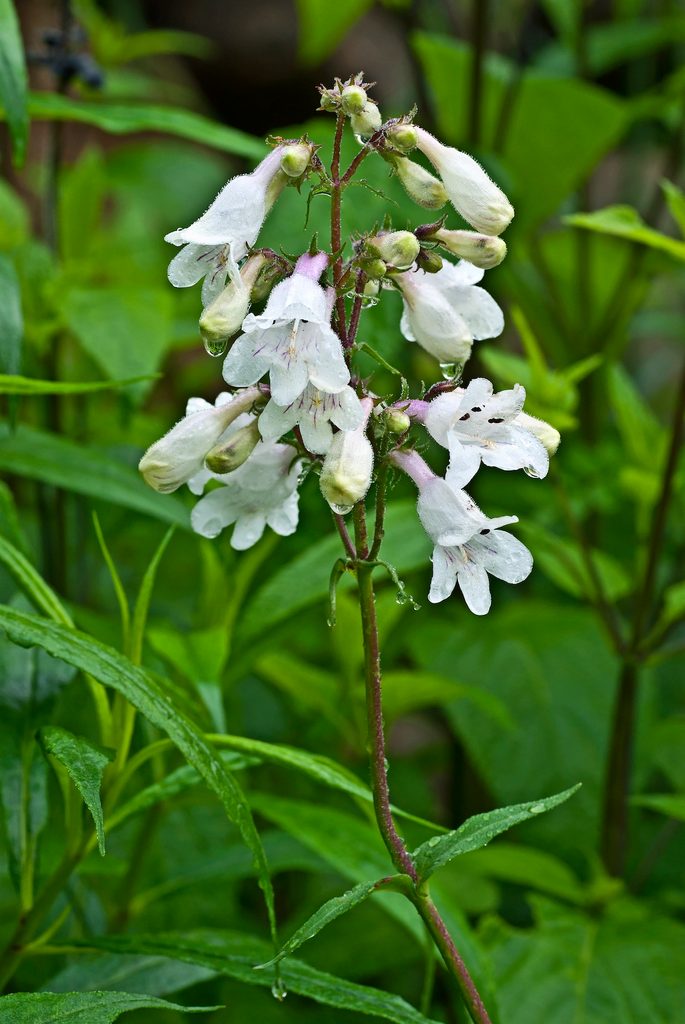
If you’d rather stick to native plants in your garden but still want something reminiscent of Digitalis purpurea, you can try foxglove beardtongue (Penstemon digitalis). Although not the same as foxglove, it reaches similar heights and shares the same growing conditions. It’s a magnet for important pollinators, like bumblebees.
Does Foxglove Attract Hummingbirds?
Hummingbirds and other pollinators like bees and butterflies love the eye-popping colors. The tubular blossoms are an especially ideal flower shape for hummingbirds to drink out of because of their long, curved bills. You can attract hummingbirds with any color of foxglove.
Are Foxglove Plants Poisonous?
Yes, all parts of the plant (flower, stem, seeds, etc.) are poisonous to humans and curious pets when eaten. The Digitalis part of its scientific name (Digitalis purpurea) is also the name of a once-common heart stimulant medication which gets its key ingredient from the plant.
Side-effects of consuming it include nausea and headache at the mildest and potentially fatal heart problems at the worst. Allen advises, “Gardeners with small children or pets may want to avoid planting Digitalis altogether.”
The upside, however, is that its toxicity is what makes it rabbit- and deer-resistant. (Just don’t use it to brew your tea!)
About the Expert
Allen Pyle is a horticulture expert and outreach specialist at University of Wisconsin-Madison’s Division of Extension. He earned a bachelor of science in horticulture and a master of science in entomology, both from Michigan State University.
Sources
- Walters Gardens
- Cornell University College of Agriculture and Life Sciences
Why Trust Us
For nearly 30 years, Birds & Blooms, a Trusted Media Brand, has been inspiring readers to have a lifelong love of birding, gardening and nature. We are the #1 bird and garden magazine in North America and a trusted online resource for over 15 million outdoor enthusiasts annually. Our library of thousands of informative articles and how-tos has been written by trusted journalists and fact-checked by bird and garden experts for accuracy. In addition to our staff of experienced gardeners and bird-watchers, we hire individuals who have years of education and hands-on experience with birding, bird feeding, gardening, butterflies, bugs and more. Learn more about Birds & Blooms, our field editor program, and our submission guidelines.
On This Page
Bougainvillea Care and Growing Tips
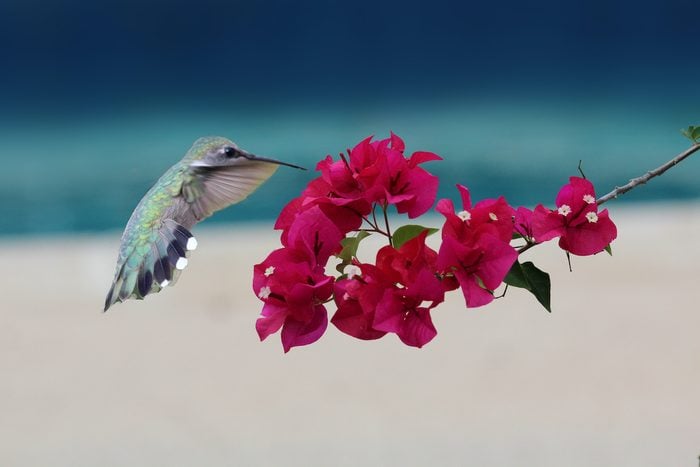
- Scientific name: Bougainvillea spp.
- Zones: 9 to 11 or Annual
- Light needs: Full sun
- Water needs: Low
- Soil: Well-draining
- Size: 2 to 40 feet tall, 6 to 40 feet wide
- Attracts: Birds, bees, and butterflies
This thorny tropical beauty provides brilliant color year-round in the south, and all summer long up north. “These plants are incredibly showy because of the way they flower all along new shoots that can be trellised or left cascading,” explains Tracy Harrison, Nursery Production Planning Manager at Monrovia. “Some varieties even have colorful foliage as a backdrop to the vibrant colors of the bracts which makes the plant more eye-catching.”
The white or yellow flowers of this vibrant vine are themselves quite small, though they do attract bees, butterflies, and hummingbirds. The real stars of the show are the bracts, the colorful modified leaves that surround each flower. They provide the color, in shades of pink, purple, red, yellow, orange, or white, against a backdrop of green foliage that’s often almost completely hidden.
Is Bougainvillea an Annual or Perennial?
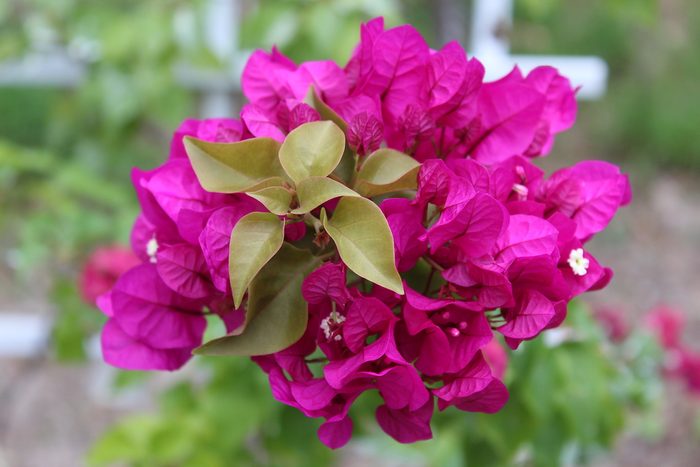
Bougainvillea loves sun, so plant it where it will receive at least 6 hours of direct light each day. It needs well-drained soil, and is very drought-hardy once established. Give it a fence or trellis to clamber up, or plant it where it can trail over a fence or railing.
This heat-loving native of the tropics can’t take freezing temperatures, but many gardeners grow it as an annual where it is not hardy. “Summers up north are plenty warm enough to grow bougainvillea, and most varieties grow fast enough to get the full cascading, running, or trellised effect they are known for,” Tracy promises. He notes that you can cover them with a light blanket in case of frost. “These are tough plants, and it would take a solid freeze to kill them completely.”
Check out the top 10 vines to grow for hummingbirds.
Bougainvillea as a Container Plant
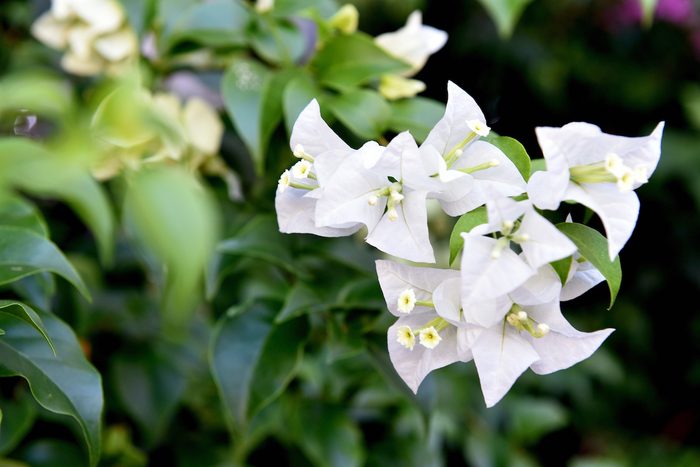
Wondering whether you can grow this plant in pots? Tracy says, “Absolutely! Containers are one of the best options for bougainvillea. In fact, root bound plants tend to flower very well. Make sure to use a rich but well-draining soil media.”
This vine makes a lovely spiller in hanging pots. You can also use it as a thriller in combo arrangements by trimming the new growth to maintain an upright shape.
“Bougainvillea can take hard prunings, so don’t be afraid to keep these in bounds or refresh them by taking off large sections of shoots,” shares Tracy. “They will return and flower again. I’ve seen very old plants in containers grown like bonsai.”
Grow mandevilla (rocktrumpet) for easy summer color.
Bougainvillea Pests, Problems and Diseases
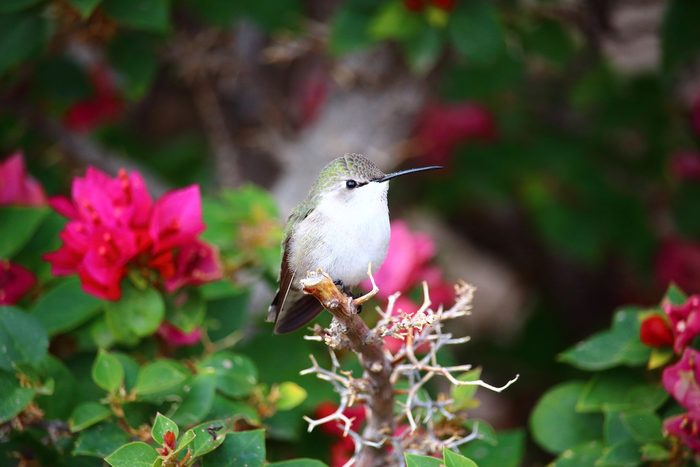
It’s important to note that this is a very thorny plant, so wear heavy gloves and other protection when planting and pruning. Keep this plant away from young kids and pets who might get a little too close for comfort.
Thorns aside, this is a pretty easy-care choice, as long as you avoid overwatering. If the leaves begin to yellow, cut back on irrigation or find a way to improve soil drainage.
“Aphids can be an issue, but can easily be controlled with lightweight horticulture oils or soaps or by hand if you have only a few,” Tracy advises. “Just look for them on the most tender new growth.”
Grow trumpet honeysuckle for hummingbirds.
Top Bougainvillea Varieties to Try
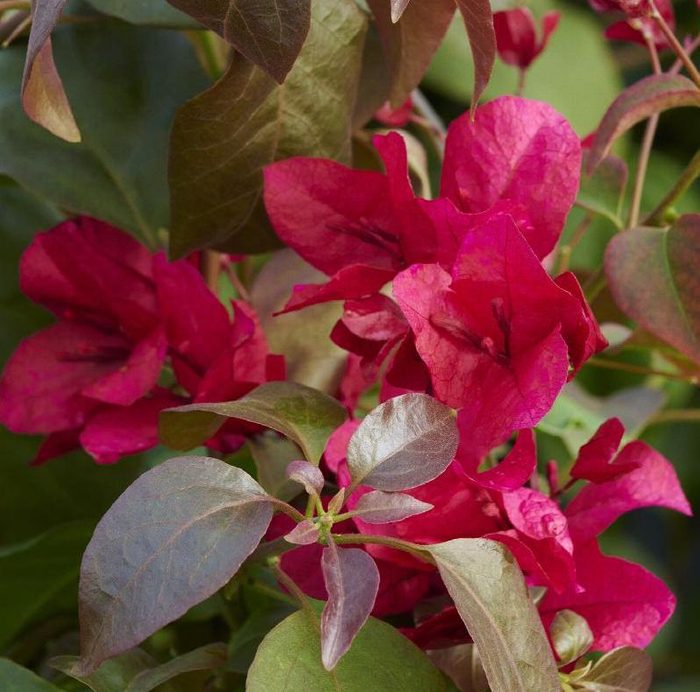
Tracy recommends a brand-new variety he personally discovered, Monrovia’s Burgundy Queen. The new growth leaves are a showy, deep wine-red, while the bracts are an even more dramatic burgundy. Bengal Orange is another real show-stopper, with variegated foliage and bracts in shades of hot pink and orange.
For containers or hedges, Torch Glow‘s unique upright, stiff branches are the perfect fit. These branches are topped by reddish pink blooms and bracts, giving it a torch-like appearance. Dwarf variety Oo-La-La is another container or border gem.
Next, learn how to grow fragrant, tropical plumeria flowers.
About the Expert
Tracy Harrison is the Nursery Production Planning Manager at Monrovia’s Cairo, Georgia, nursery location. He studied horticulture at the University of Georgia, and has been a Monrovia Craftsman for 30 years. In 2014, Tracy discovered Burgundy Queen, a new variety of bougainvillea recently made available to home growers.
Sources
On This Page
Lantana Flower Care and Growing Tips
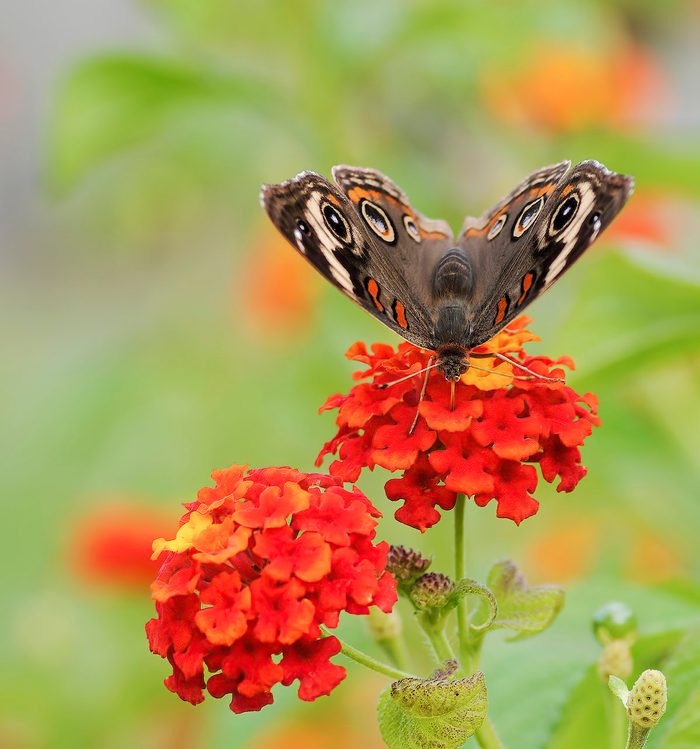
- Scientific name: Lantana camara
- Common names: Lantana, Bush lantana, West Indian lantana
- Growing zones: Perennial shrub in zones 10 to 11, perennial in zones 7 to 9, annual elsewhere
- Native to: West Indies, Central and South America
- Size: 1 to 6 feet high, 3 to 5 feet wide
- Light needs: Full sun
- Water needs: Average, prefers even moisture; drought tolerant once established
- Soil needs: Rich, well-draining soil
Coming in a dazzling array of saturated sunset hues, a lantana flower (Lantana camara) is a no-fuss, easy-care plant that blooms nearly non-stop in full sun.
Is Lantana an Annual or Perennial?
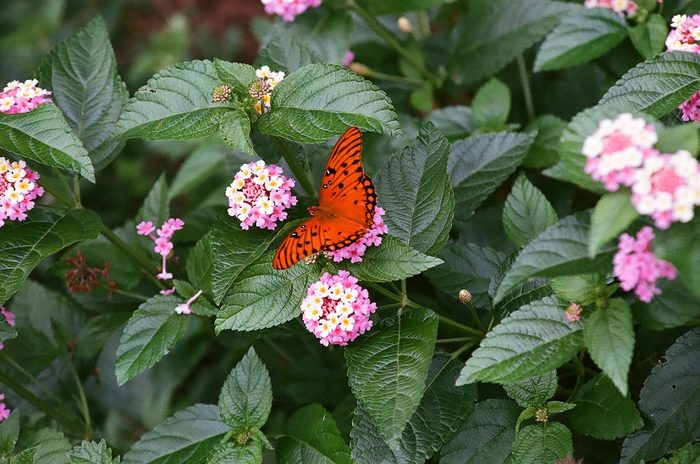
“In mild winter climates, they will grow year-round outdoors,” says horticulturist Noelle Johnson, author of “Dry Climate Gardening.” In these cases, they can reach shrub proportions up to 6 feet tall and 5 feet wide.
“For cooler climates, they make an excellent, warm-season, flowering annual,” she says. As an annual, they usually hover around 1 foot tall and can be used to edge garden beds or as container accents.
It’s possible to overwinter your lantanas as houseplants, too–usher them indoors before temperatures near 28 degrees Fahrenheit, and place near a window in a cool unheated room. The plants will go dormant, so water sparingly, and return them outside when temperatures are reliably over 55 degrees.
If they are perennial in your area, you can multiply your plants with hardwood cuttings in the fall.
Wildlife Benefits
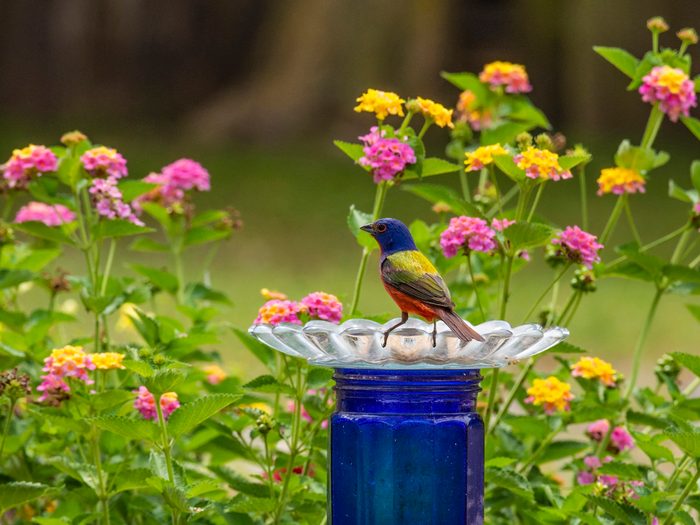
Hummingbirds love their nectar, bees and other beneficial insects adore their pollen, while other birds nibble on their berries. Deer avoid them, and they have few pest or disease issues.
Check out the top colorful hummingbird flowers for your garden.
Lantana Varieties to Grow
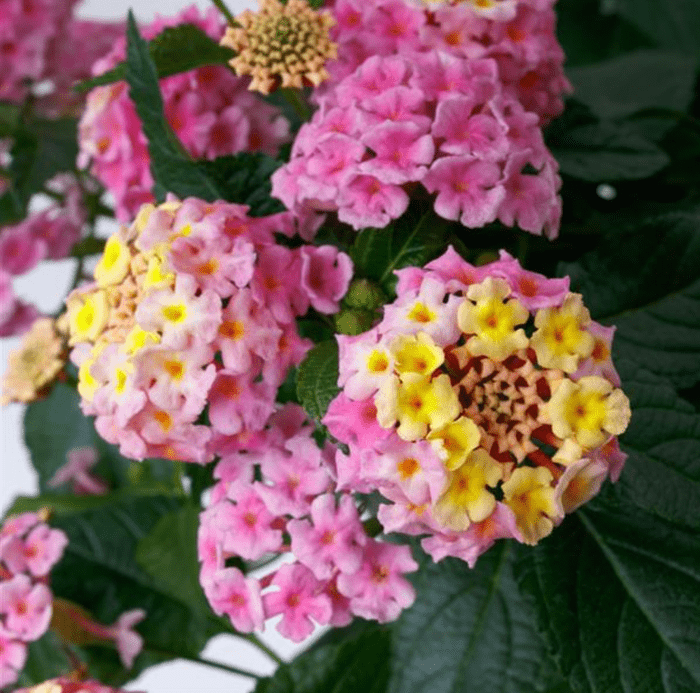
The lantana family keeps growing as breeders add dazzling color combinations to the flowers, boosting qualities like drought tolerance, low seed set, compact habit, and bloom count. There are upright, trailing, and mounding shapes for every garden situation.
‘Bandolista Red Chili,’ with a slightly trailing habit that makes it a natural for hanging baskets or containers has been a favorite in several recent plant trials, according to Greenhouse Product News. ‘Evita Red’ offers a party of red, yellow and orange in each blossom while ‘SunDance Pink’ brings out the softer side in sweet pastels.
Seek out certified sterile varieties like ‘Luscious Marmalade’ and ‘Royale Red Zone’ if you live in humid/wet areas where lantana can be invasive. Noelle also notes the hybrid ‘New Gold’ is largely sterile. As a bonus, without setting seed, they plants will also bloom longer without needing deadheading.
Where and When to Plant Lantana
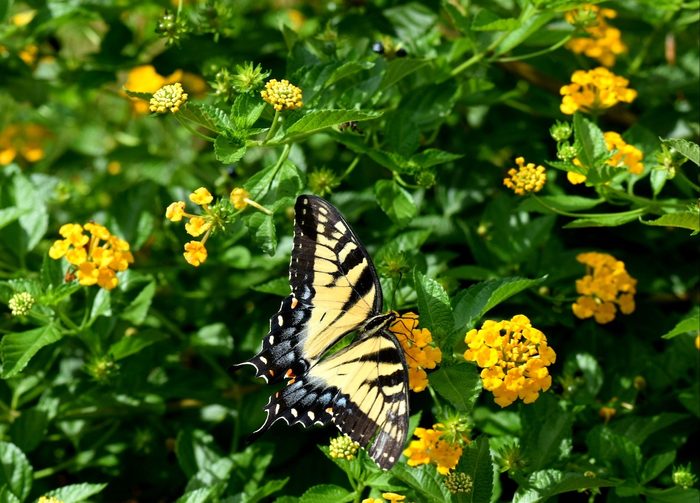
Save your sunniest spot for lantana, which flowers most profusely in full sun, says Noelle.
Lantana are slow to flower from seed, so most gardeners start growing them from small transplants. In warm areas, you can plant lantana in spring. Gardeners in cooler climates should watch for them at nurseries and plant after the last spring frost when temperatures are reliably warm enough.
Pruning and Fertilizing Lantana
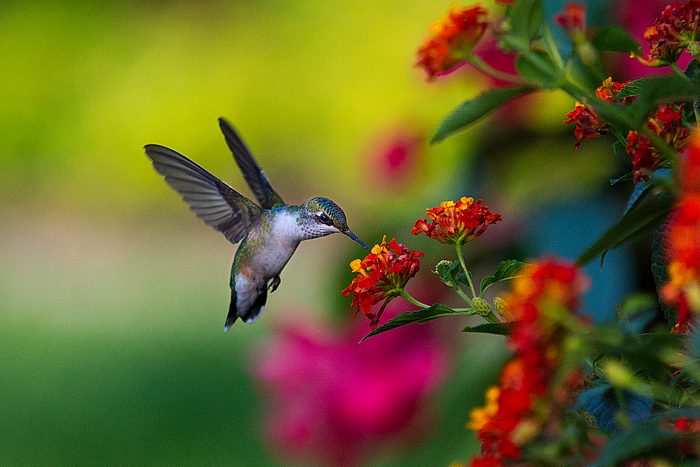
If your lantana grows too lanky, pinch off the top growing points to encourage more lantana flowers and fuller growth. At shrub size, you can even take a hedge shear to them. Pruning can be done anytime, according to Proven Winners.
In-ground plants shouldn’t need fertilizer, but container-grown plants may benefit from a slow-release fertilizer at planting time. Overdoing fertilizer can hamper flower production. Deadheading can encourage new blooms and stop seed-set in non-sterile cultivars.
While unfussy about soil types, their favorite situation is well-draining and rich soil. Lantana prefer to be kept evenly moist but can be drought-tolerant once established. Take care not to let your plants stay overly wet.
Is Lantana an Invasive Plant?
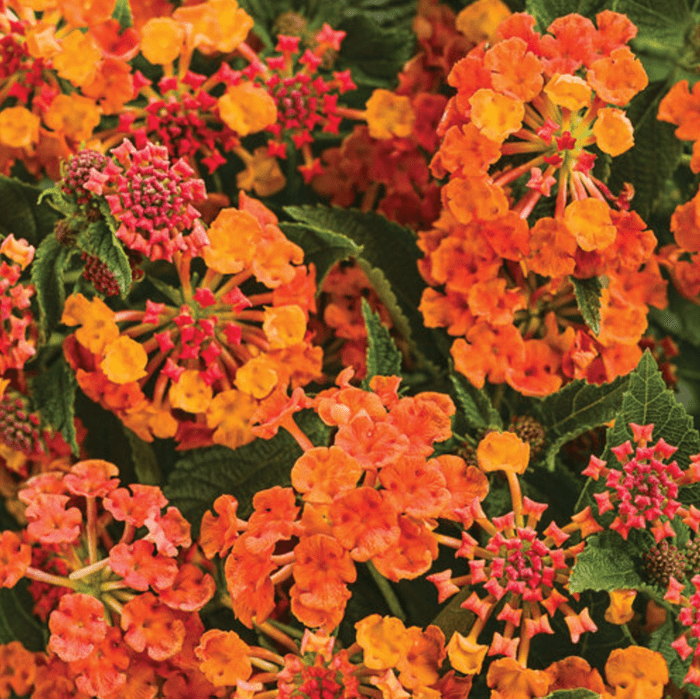
According to the University of Wisconsin-Madison Division of Extension, lantana is considered an invasive weed in Hawaii, several southern states, eastern Australia, the Galapagos Islands, and other islands and tropical areas.
“Lantana camara can self-seed where moisture is present, such as in irrigated gardens,” says Noelle. “In more tropical and humid regions, (the plants) can spread unchecked, spreading by seed. They spread more aggressively in wet, humid and warm locations.”
Noelle says in dry sites, lantana is less likely to roam where unwanted.
If you are concerned about keeping lantana contained within your garden, especially if you live near an open green space, stick with sterile cultivars.
Are Lantana Plants Toxic?
Although birds snack on the berries, lantana’s leaves and berries are toxic if ingested in large amounts and can be fatal for livestock. Among humans, they typically cause symptoms like digestive upset. Noelle also notes, “The foliage of lantana can be mildly irritating to the skin.”
About the Expert
Noelle Johnson, horticulturist and author of “Dry Climate Gardening,” gardens and consults on landscape design in Phoenix, Arizona, and has taught at the Desert Botanical Garden and Tuscon Botanical Garden.
Sources
- ASPCA – Lantana
- Texas Invasive Species Institute – Lantana camara
- Colorado State University – Lantana
- Reuters – Lantana Plant Safe for Toddlers
- North Carolina Cooperative Extension – Lantana
- Proven Winners – Lantana
- University of Wisconsin-Madison Division of Extension
- Gardening Know How – Overwintering Lantana Plants
- Syngenta Flowers
- The National Gardening Association
- Ball Horticultural Company
- Monrovia
Why Trust Us
For nearly 30 years, Birds & Blooms, a Trusted Media Brand, has been inspiring readers to have a lifelong love of birding, gardening and nature. We are the #1 bird and garden magazine in North America and a trusted online resource for over 15 million outdoor enthusiasts annually. Our library of thousands of informative articles and how-tos has been written by trusted journalists and fact-checked by bird and garden experts for accuracy. In addition to our staff of experienced gardeners and bird-watchers, we hire individuals who have years of education and hands-on experience with birding, bird feeding, gardening, butterflies, bugs and more. Learn more about Birds & Blooms, our field editor program, and our submission guidelines.
